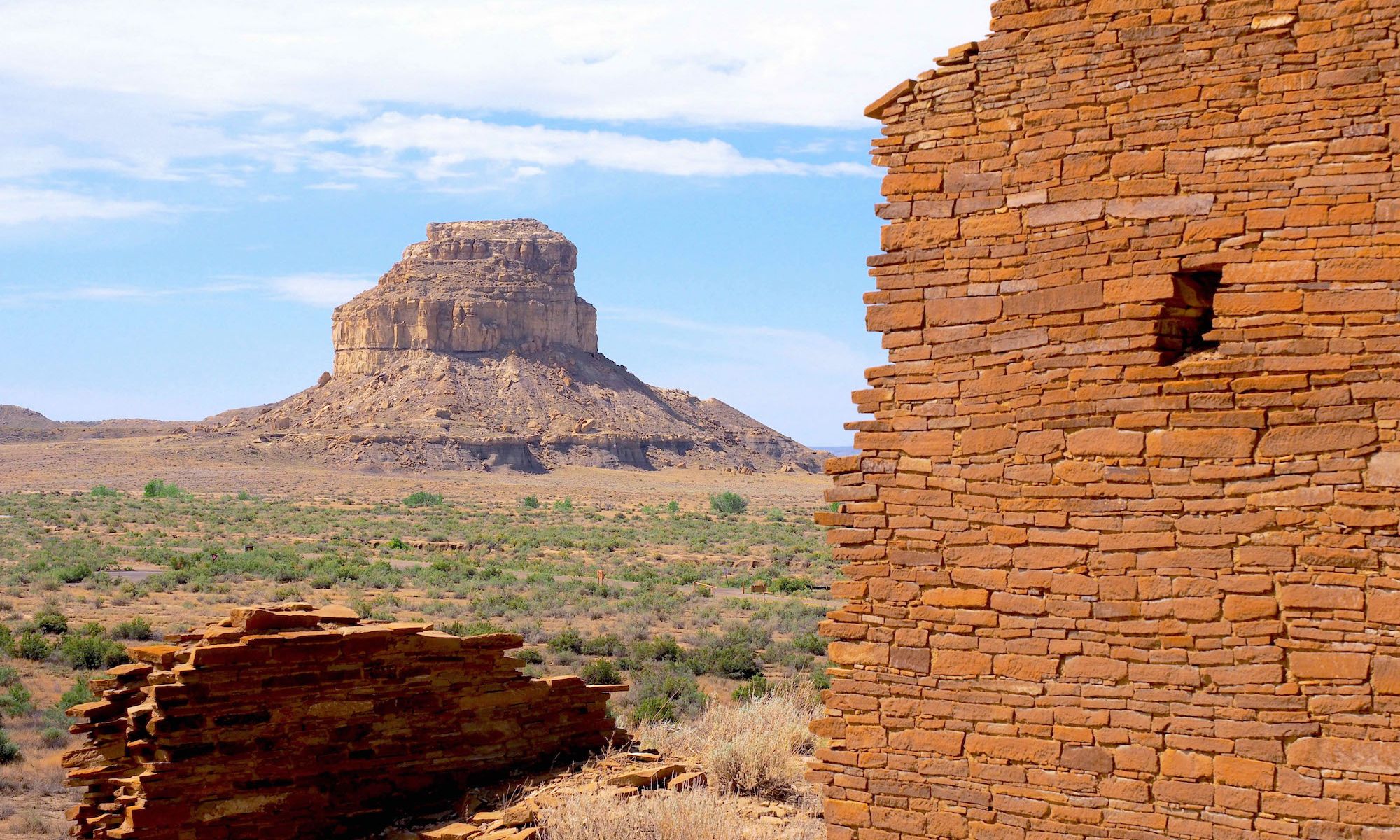A Pueblo site at Chaco Culture National Historic Park in Chaco Canyon Photo by AlisonRuthHughes via Wikimedia Commons
US president Joe Biden announced on 15 November that his administration is moving to block fossil fuel drilling within a 16km radius of Chaco Canyon, a roughly 30,000-acre site in New Mexico that was once a major cultural centre for the Pueblo people. Chaco Canyon has been a Unesco World Heritage site since 1987, and is currently home to some of the most significant Native American ruins in the country.
“No group of Americans has created and cared more about preserving what we inherited than the tribal nations,” Biden said in a tribal nations summit held at the White House earlier this week. “We have to continue to stand up for the dignity and sovereignty of tribal nations.”
According to Unesco, Chaco Canyon was a major centre for the Pueblo people between 850CE and 1250CE, and today it contains the remains of “a network of archaeological sites in northwestern New Mexico that preserves outstanding elements of a vast pre-Columbian cultural complex that dominated much of what is now the southwestern United States from the mid-9th to early 13th centuries”. Many of these architectural sites were linked by elaborately constructed roads, the remains of which can still be seen, and a number of structures at the site are multiple stories tall, with stonework that contains intricate coursed masonry.
Despite opposition from tribal leaders and environmentalists, the Trump administration had released a plan that would have allowed for the drilling of more than 2,300 oil and gas wells in the area, a plan the Biden administration—which is facing pushback of its own from Republicans and from New Mexico’s oil and gas industry—is bringing to a halt.
“Chaco Canyon is a sacred place that holds deep meaning for the Indigenous peoples whose ancestors lived, worked and thrived in that high desert community,” Deb Haaland, the secretary of the interior and a member of the Pueblo of Laguna, said in a statement. “Now is the time to consider more enduring protections for the living landscape that is Chaco, so that we can pass on this rich cultural legacy to future generations.”
According to the statement put out by the Department of the Interior—which oversees the nation’s natural resources and cultural heritage—the next step is for the Bureau of Land Management to “publish a notice in the Federal Register that will commence a two-year segregation of the federal lands while the bureau conducts an environmental analysis and seeks public comment on the proposed administrative withdrawal”. The bureau will consult with Tribal leaders when doing so.
In a statement, Tracy Stone-Manning, director of the bureau, added that the agency “look[s] forward to kicking off a broader regional conversation with the many people who care deeply about the Greater Chaco landscape on how we can best manage the cultural and natural values unique to this special place”.

